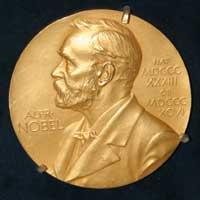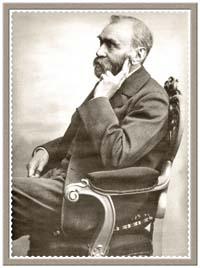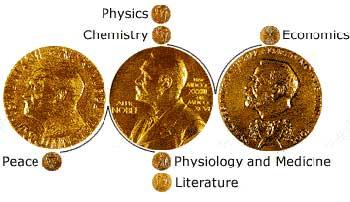Nobel Laureates: tradition vs innovation
2009/10/17 Galarraga Aiestaran, Ana - Elhuyar Zientzia
A group of scientists believe it is time to innovate. The initiative was based on a proposal by the scientific journal New Scientist. In fact, this magazine brought together ten leading scientists to discuss the adequacy of the Nobel Prize for current science. And from there came the idea of writing the letter.

A group of ten scientists calls for the Nobel Prize to be updated. (Photo: Nobel Foundation )
The signatories recognize that the Nobel Prize still has great importance and influence. However, in his opinion, at the time of its creation, scientific areas of special relevance today could not be foreseen, so they are not taken into account in the Nobel Prize, since they do not coincide with the established categories.
Thus, Solhman has requested the creation of the Awards for the Environment and Public Health and the extension of the Prize for Physiology or Medicine so that other fields of the life sciences have a place, such as basic biology and behavioral sciences.
In any case, the Nobel Prize jury has shown on more than one occasion its lack of rigour with the categories. The 2007 Nobel Peace Prize is a clear example, as it was received by IPCC and Al Gore for their work in the fight against climate change. The truth is that the appointment of Al Gore provoked quite a stir, although not as much as that of this year.
Returning to the scientific awards, this year it also seems that this group of scientists has taken into account the criteria to which the letter refers, since the pioneers of some technologies of daily use will receive the Nobel Prize of Physics (fiber optic and eyes of digital cameras), while the Nobel Prize of Chemistry is a prize in the field of the biochemistry of the structure and functioning of the ribosomes).
With these two awards there is a curiosity: Researchers Willard Boyle and George Smith will receive half of the Nobel Prize in Physics (the other half will give it to the fiber optic inventor) for having invented the CCD sensor. And that technology was used by a third of the Nobel Prize in Chemistry, Ada E. Yonath scientists to investigate the structure of the ribosomes.
The most curious Nobel Laureates
However, they are more rare than the Nobel Prizes, which are awarded at the same time they are announced. In fact, the Ig Nobel Prizes are granted to investigations that cannot be repeated or that it is not advisable to repeat. These awards are organized by the magazine Annals of Improbable Research and, although initially all the award-winning research generates a smile, "what they think afterwards".
For example, the Nobel Prize in Chemistry has been awarded to three researchers from the Autonomous University of Mexico for the manufacture of diamonds from tequila and Veterinaria to two researchers from the University of Newcastle for demonstrating that the cow bearing its name gives more milk than the anonymous one. For its part, that of peace coincides fully with the foundations of IgNobel, since it is not convenient to repeat: Five researchers at the University of Bern have investigated what is most damaging if they take on the head, empty or full beer bottles.
For the curious, the research was published in the specialized journal Journal of Forensic and Legal Medicine. According to him, empty bottles are broken with an energy of 40 J and filled with 30 J. Both are able to unseat the skull, but the empty bottle causes a more serious injury.
Published in Gara

Gai honi buruzko eduki gehiago
Elhuyarrek garatutako teknologia






